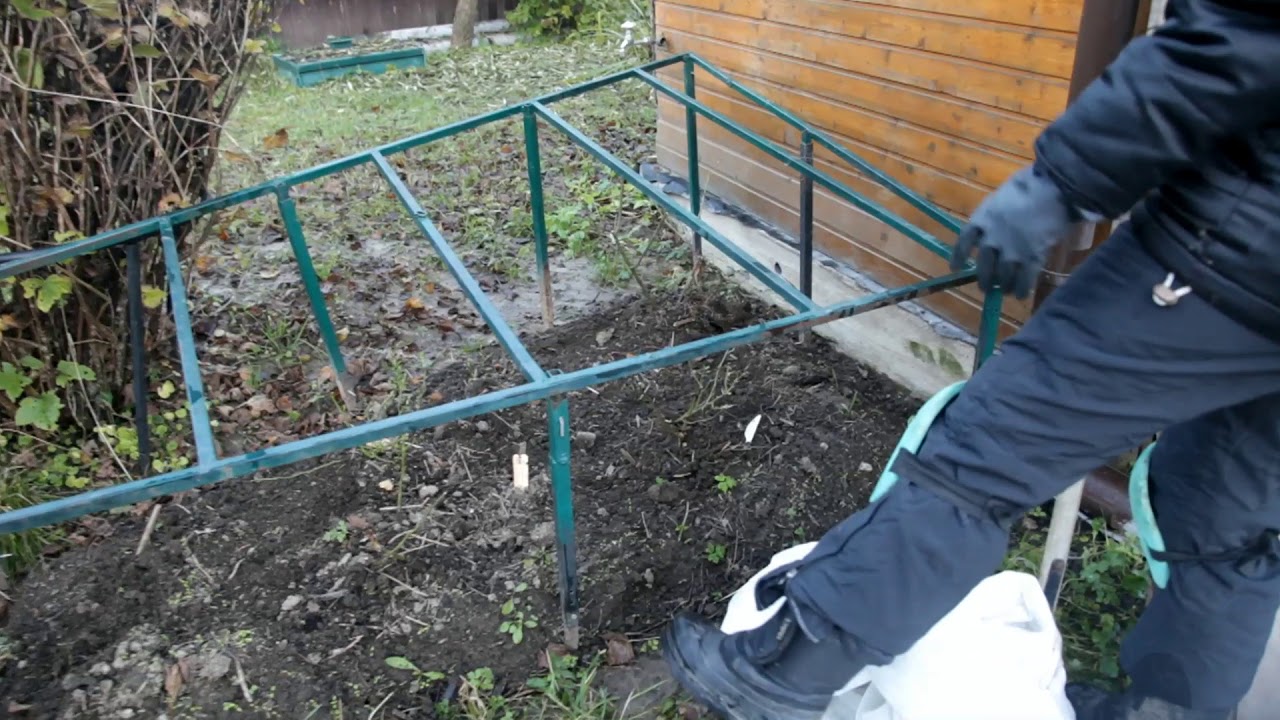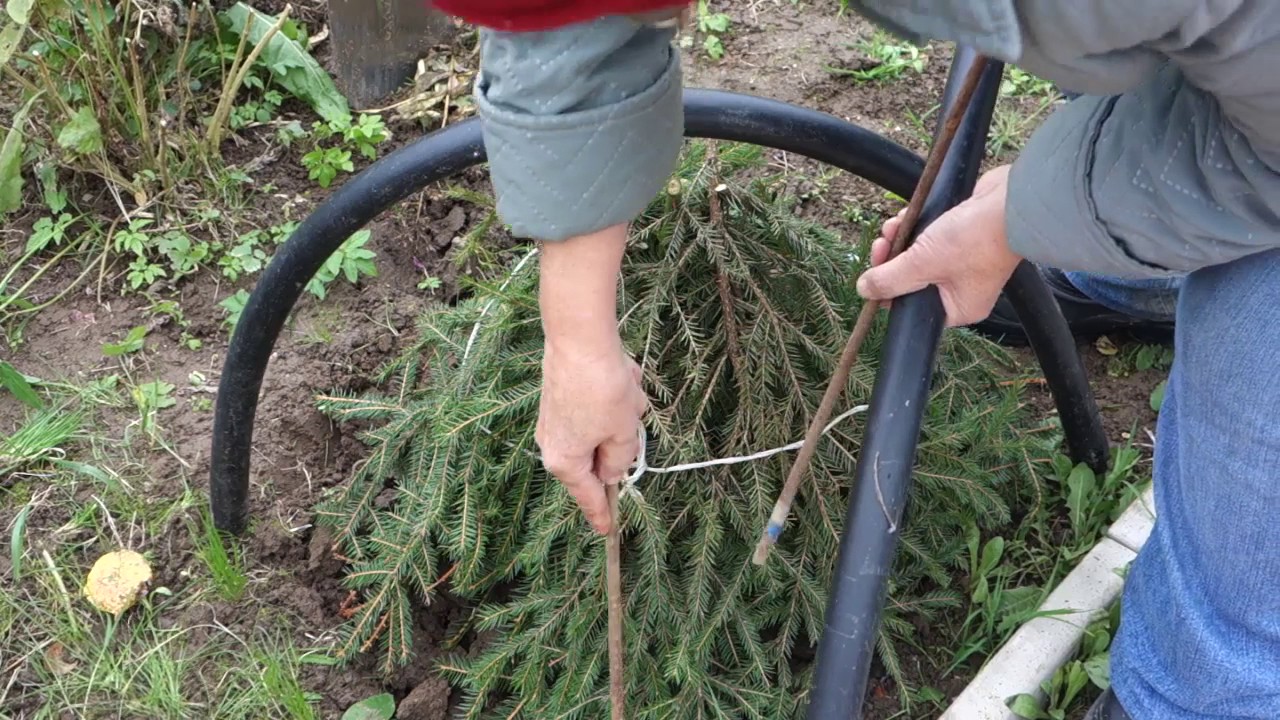How to cover roses for the winter in the garden to save
Content:
Perhaps every reader will agree that it is the rose that is one of the most beautiful plants. It is not surprising that many grow them in their summer cottages or near private houses. But with the cold season approaching, every florist must figure out how to cover roses for the winter to help them survive this difficult time and in the spring again enjoy the beauty and scent of flowers.
What roses require shelter in winter
First of all, you should figure out whether you need to cover roses at all in the fall or this can be avoided. It depends on two factors - the region and the variety of flowers. It is quite understandable that the more severe the winters, the more serious the insulation should be. For example, in the southern regions, where the temperature rarely drops significantly below freezing, it is quite possible not to cover the bushes. And vice versa, in the north, where the first frosts can hit already at the end of September, you cannot do without good shelter.
In addition, some varieties tolerate low temperatures quite easily. These include:
- Hanzu;
- John Davis;
- Jens Munch;
- Scabroso.
Of course, this is not a complete list of winter-hardy varieties. Therefore, when buying bushes in a store or taking from friends, it will not be superfluous to find out how to prepare roses for wintering and whether it is necessary at all for specific varieties. If the conversation is about an ordinary rosehip and its many varieties, then the answer here is unequivocal - it will easily overwinter without shelter.
Do I need to cover frost-resistant varieties
The next question is whether frost-resistant varieties need shelter. It turns out not. Some varieties, especially those bred in harsh Canada, do not need shelter. But this does not mean at all that they do not need to be properly prepared for wintering - more on that later. However, it is important that insulation is not at all necessary for them.
Wintering conditions for thermophilic roses
Most of the exotic roses, as well as miniature, climbing and hybrid tea, are considered to be the most thermophilic varieties. They need special protection in winter. The bushes need not only to be well hilled, but also to be insulated from above, and even the most thermophilic ones should be completely buried.
If we are talking about the coldest regions, where the temperature drops to -30-40 degrees and stays at this level for weeks, then it makes sense to grow roses in special flowerpots. This allows them to be taken out into the garden in the summer, and in the cold season, they can be transferred to a frost-protected room - a greenhouse or on a veranda. Although it is troublesome, it is perhaps the most reliable way to preserve your favorite flowers.
How to cover roses to preserve them in winter
The next serious step is choosing the right material for winter insulation. In general, if the snow in the region is very abundant and before the first real frosts hit, then you can not rack your brains over what is the best way to insulate the flowers. But in many regions of Russia, belonging to the middle lane, the temperature can drop to a dangerous level long before the ground is covered with a thick layer of snow.Therefore, you should think in advance about the best way to cover the bushes in order to protect them from the cold.
Air dry shelter
This option is suitable for cases where a large number of rose bushes are concentrated in one place, for example, on an area of 10-20 square meters.
A small structure is being erected right above the bushes - a frame about 50-100 cm high made of solid boards, a bar or a slab. From above, the frame is closed with a suitable material - from roofing material to lutrasil. The main function of the structure is to keep the heat coming from the ground and protect it from the cold. At the same time, the shelter remains open from the sides to provide ventilation and remove excess moisture. Only when the air temperature drops to -5-8 degrees, the shelter should be closed from the ends, finally protecting the bushes from the cold. In winter, the entire frame will be covered with snow and the thermal insulation will become even more effective.
This rose shelter is simple and reliable. But, of course, if the bushes are scattered throughout the site, then building a shelter over each of them is not only troublesome, but also completely ineffective due to the small area.
Warming with spruce branches
Another way to reliably close bush roses is to use spruce branches. This technology has been used effectively for many decades. In addition, this shelter is perfect for single bushes planted at a great distance from each other. It is enough just to cover the bushes with a thick layer of spruce branches so that they can easily endure even a very harsh winter.
Large armfuls perfectly retain the heat emanating from the ground, and also reliably protect from the cold wind. The needles, or rather the air between them, creates a kind of fur coat that provides good thermal insulation. It is important that it does not interfere with the natural removal of moisture at all - there is no need to be afraid that mold or rotting will appear due to high humidity. The earth and bushes breathe freely and feel great.
An additional plus is protection against infections and some parasites. The fact is that needles are a natural antiseptic. Therefore, even during unexpected thaws, in which many bushes are affected by bacteria, roses feel great under spruce branches.
Unfortunately, there is a drawback here as well. Still, it is not always possible to get spruce branches. Not going into the forest to cut down a spruce and chop off its branches - this will certainly be regarded as poaching, and flower lovers will certainly feel sorry for the tree. But if there is such an opportunity (for example, when carrying out sanitary felling), then a spruce tree shelter will be an excellent solution.
Use of agrofibre, spunbond and geotextile
Of course, speaking about which rose care is better, one cannot fail to mention modern materials such as geotextiles, spunbond and others. In general, the option is quite effective, but not always and only with the correct use of insulation.
You can buy the right amount of covering material in almost any specialized store. After that, they only need to cover the area with roses, creating a small air cushion above the soil. At the edges, the material is fixed with bricks, stones, boards or other weighty objects so that it is not blown away by the wind. As in the case of an air-dry shelter, the disadvantage is exactly the same - it is completely unsuitable for free-standing bushes. But for large clusters - quite.
Alas, some gardeners do not fully understand how such heaters work and simply wrap individual bushes with geotextiles or agrofiber. And then they complain that the material did not work and the bushes froze. This is not surprising - plants do not generate heat by themselves. Therefore, the main task is to keep the heat that comes from the ground. So you need to cover as large an area as possible, and not just the trunk of the plants.
When is it time to cover the roses
It is also very important to figure out when to start preparing roses for wintering. Of course, this largely depends on the climate in a particular area, as well as the weather. Therefore, an unambiguous answer cannot be given here.
Dates of the procedure
To protect roses and prepare for winter, pruning and warming in time, you should focus on approximately the following data:
- Moscow region and middle zone - from late October to early November. You should not be afraid of early frosts - most roses (except tropical varieties) can easily withstand a short-term cold snap to -15 degrees. The foliage will, of course, fall off, but the plant itself will not suffer.
- Siberia and the Urals - you should be guided by the beginning to mid-October. In any case, it is advisable to closely monitor the weather. If, according to forecasts, they promise a cold snap to -15 degrees and below, and these are not ordinary frosts, after which warm days will return, but a real onset of cold weather, then it is already worth insulating your favorite flowers.
- Southern regions - in most cases, insulation is not needed at all. This should be done only when forecasters predict a cold winter with frequent cold snaps below -15 degrees.
Which is better to bend or trim the roses in front of the shelter
Preparing roses for wintering is not enough with covering alone. Before insulating the bushes, you need to properly prepare them. And here there are two options - trimming and folding.
It would seem that pruning plants is much easier than bending down. However, as practice shows, this method is not very effective. Even if you cut the bushes, the tops will still dry out over the winter and will have to be pruned again in the spring. Therefore, it is better not to do this, but immediately go to bending down.
How to bend bushes correctly
But bending the bushes is also a more complicated procedure than it might seem at first glance. They need to be bent very carefully and completely, fixing them on the ground with long metal rods. Here are just some of the bushes have rather thick, stiff trunks. As a result, when the grower starts laying them, they just break.
To prevent the branches from breaking, the procedure must be carried out before the frost sets in, after which the bushes will become brittle. The work is often delayed for a whole month. Every 4-6 days, you need to gradually press the bushes to the ground, fixing in this position. Then, if you start in late September or early October, before frost it will definitely be possible to bend the bushes and provide them with a comfortable wintering.
Some shoots turn out to be so elastic that even with this approach, they return to their original position, pulling metal studs out of the ground. The problem is solved by more radical methods. The bushes are pressed with a board, on which several bricks are laid. Already after a week of such "pressure" the plants take the desired position - it remains only to fix them with pins and remove the board with bricks.
Of course, it looks rather cruel, but in fact, the plant is not harmed and in the spring, with the arrival of the first warm days, it actively recovers and feels great - much better than if it was left to stand all winter.
Having remembered how to cover roses for the winter, even a novice gardener can easily provide a comfortable shelter for his favorite bushes. Therefore, in the spring, the plants will quickly come to their senses and will delight those around them with gorgeous flowers all summer long.




















